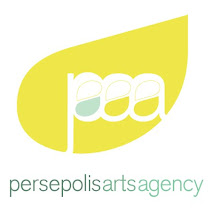Walking through the Center for Visual Artists to view the last days of exhibiting VISUAL DOCUMENTS by Juie Rattley III, it is impressive to note the impact each brush stroke has on the work. Oil on canvas, spread with long caressing strokes evokes a sense of compassion for the sleeping woman, while short thick jabs of dark colors evoke distain or perhaps simply imply something coarse and unrefined about the man seemingly looking past the viewer.
A grouping of self-portraits depicts a series of reactions to hearing of the death of a friend. With bold colors and an obvious mixture of brush strokes it is easy to see the progression of shock to outrage to confusion to grief. It is the combination of bold, dark colors and the visual tracing of the brush strokes that gives each piece a distinction beyond the expression and stance of those in the paintings.
One painting stands out of the entire collection, drawing you back repeatedly. Blue is the dominant color with white, black, brown and a hint of yellow. However it is the brush’s touch upon the canvas that is the fascinating aspect of note. Each color is dabbed in a loose cube-like manner giving the whole painting an almost pixilated feel. It is detaching, yet engaging at the same time. It is easy to spend so much time entranced by the texture and to become startled to see that the subject of the painting seems to be studying you just as intently.
-Veronica Ibarra
http://www.greensboroart.org/
After receiving a Facebook invite to the entitled 'Showdown', (a competition) exhibition of varied artists at Hart Witzen Gallery event I couldn't pass up the opportunity to not only attend a surprisingly unknown to my knowledge gallery in the area but also artists whose names were new to my ears and work to my eyes.
So there I am, confronted with a card at the door with a list of the artists names featured in the showing with empty boxes beside each name to puncher after viewing to cast your vote of choice for favorite artist to be inserted in a raffle box. But little did I know walking in, that the first viewed collection that looked to be inspired by the Rorschach test used to subject perceptions of inkblots for psychoanalysis would be my vote right away without any further consideration or curiosity of other works. After submitting my ballot I visited other mediums and concepts and fortunately I remained without regret - l know what I like.
Penland's mixed media abstract almost existential analysis on nature combined with sophicated composition and intelligence swooned me. Especially, the work on light boxes in particular. It's the kind of pieces you would even want to see in the dark and thanks to modern contemporary design being three of her canvases you can. The fascination of the human mind/nature with the play of the inkblot like forms give not only the eye constant evolution through shape from angle to angle but a perspective interactive.
Lori Love Penland's collection was featured at Hart Witzen Gallery from February 4th-18th.
Q&A
Q - Out of curiously and not to 'kill the cat' but do you have a background in psychology?
A- I like to say that I have a background in the human animal. My first two years as an undergraduate student were spent in a premed program. I was infatuated by the human body at a cellular level, the level the human eye cannot see without the aid of microscope. However, that infatuation waned somewhat as I began to pursue interest in philosophy, psychology, sociology and the social sciences. I actually did a fellowship at a University in England studying the writings of Marx and Lenin.
Q - I read a bit of info on your site and it quotes "My work as an artist is one of continual struggle whereby I attempt to narrow the chasm between vision and reality." and "Many of the paintings in the Human Touch series are based on images from photographs, newspapers and magazines documenting the state of society and the often overlooked emotions of shame, grief and despair as exhibited by addicts, the homeless, the institutionalized, and other more vulnerable elements of modern society."
